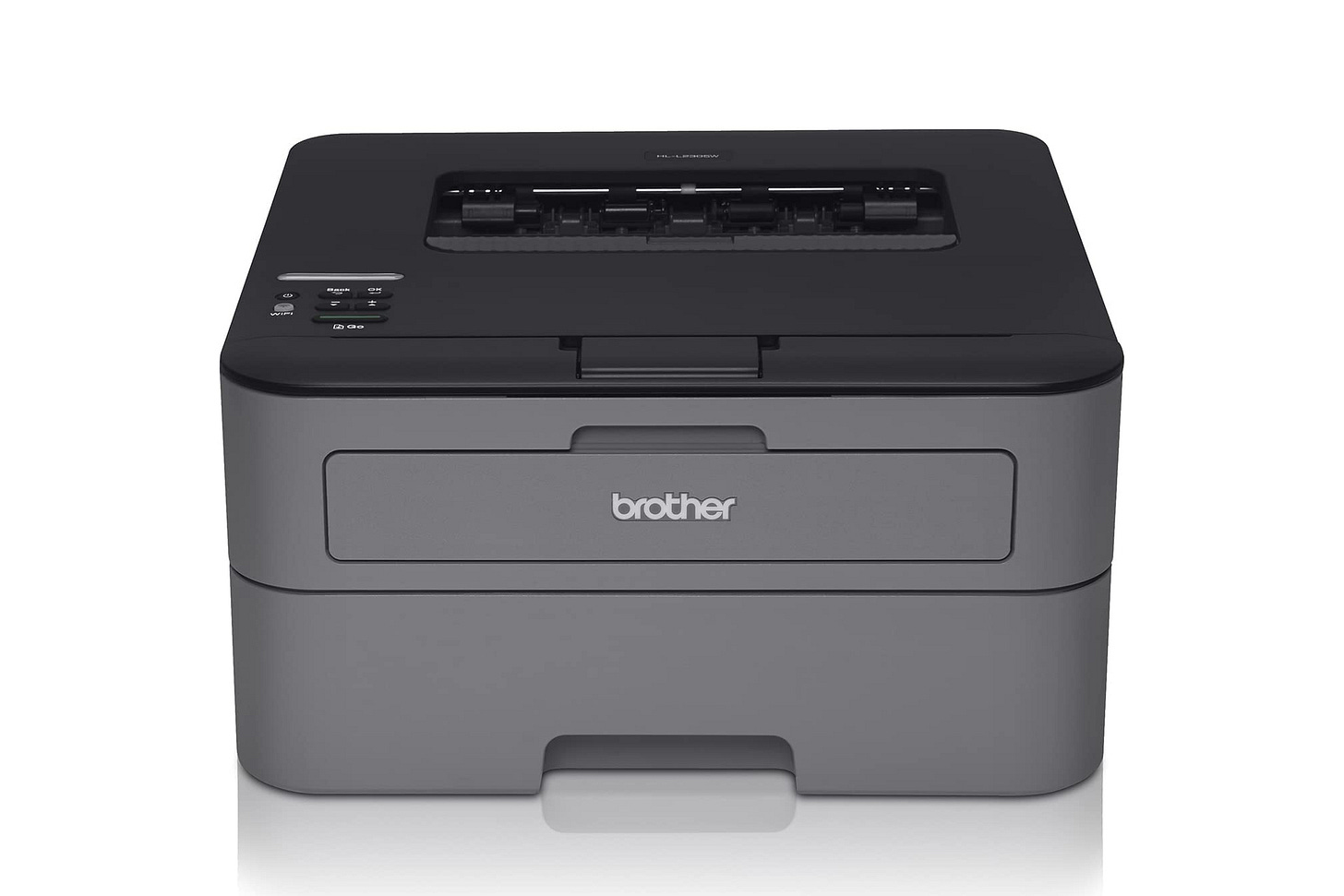When Not Hated Becomes the Standard
What a printer taught me about the shrinking soul and current values of modern business
It was a slow Saturday morning. I was browsing through the Financial Times when I landed on something unexpected—an article about printers. Specifically, a boring black-and-white Brother laser printer. The journalist, Sarah O'Connor, had an honest, very human confession—she loved it. Not because it's beautiful or smart. But because it doesn't make her want to scream. It just works.
That's when I realized: I have the same printer! And I don't hate it either. I have some complaints, sure—but overall, since I bought it maybe five or six years ago, we've had a surprisingly good relationship.
It felt strange to notice that. Stranger still to realize how rare that feeling is. Most products today seem designed to frustrate. Ever fantasized about smashing your laptop against the wall—or gently dropping it from the 30th floor in a moment of poetic justice, streaming it to TikTok? I hear you.
O'Connor's piece laid out the bitter psychology of the printer industry: how cheap machines trap us into overpriced ink subscriptions, how nozzles clog if you don't print every week, how even the companies themselves now market their products as "less hated." When I read that in 2023, HP produced an advert of an infuriated man kicking a printer off the table, with the tag line "Made to be less hated," I was shocked.
This isn’t just about printers. It’s about what it means to use something and feel—even quietly—that someone gave a damn. That the person who made it wanted your day to go a little smoother. That’s a small thing, but it leaves a real mark.
We live in a world where businesses have quietly redefined success as "good enough to avoid a return." Platforms optimize for clicks, products get thinner and cheaper, customer service disappears behind chatbots (no - I DONT want to speak to a bot). Under pressure to scale and squeeze, we've normalized frustration as the cost of modern life.
When did the bar drop so low that the best thing we can say about a product is that it didn't ruin our day?
Care as a Creative Standard
That wasn’t always the goal. There was a time when founders really cared—and some still do. Brian Chesky at Airbnb. Patrick Collison at Stripe. Evan Spiegel at Snap.
Care is where artistry begins. And in today’s technological world, where mass adoption is critical, care becomes even more essential.
Artful leaders understand this in at least two ways:
They care because they want to give us the best possible experience.
They care because they know that for technology to truly advance, people have to love it—not just use it.
Apple understood something profound early on: for people to master a complicated machine—and pay a lot of money for it—they have to fall a little in love. They have to believe it will help them be better. They have to want it in their lives. Not just to work with it, but to love it.
That's what Apple changed in tech. They didn't just design computers—they redefined the emotional relationship people could have with technology. The same way Braun reimagined household objects. The same way Disney turned entertainment into immersive delight. These companies weren't chasing "not hate." They were chasing devotion.
That devotion isn't magic. It's built through thousands of decisions guided by a particular mindset: business artistry as an act of care.
Jony Ive once said: "If we want to participate as members of the species, we don't have a choice. It's an obligation and a responsibility to care for each other." He wasn't talking about charity. He was talking about work.
When you spend your days building something people will use, and you don't care how it affects them—when you treat it as "just business"—you miss the point of work entirely.
The Weight of Indifference
So, how do we change it?
Let’s see two examples.
When working on the iPhone, Steve Jobs didn't just want to make a better phone. He wanted to make something you loved to hold. When the original iPhone team worked on the project, there was no traditional product manager. As engineer Ken Kocienda later recalled, the product manager was either Steve—or it was everyone. Every member of the team felt responsible for the user's experience.
Apple still named a DRI—a Directly Responsible Individual—for each feature. But the cultural default wasn't "do your part and ship." It was "own the experience, together."
That's one way forward: build cultures where everyone sees themselves as stewards of the experience, not just executors of tasks.
The other way is more personal—and uncomfortable. We need to ask ourselves harder questions about what we choose to put into the world. Before releasing that feature, that product, that campaign—pause. Ask yourself: "Is this really the work I want to be known for?"
Not perfect. But thoughtful. Considered. Human.
Because here's the truth: everything we build carries our signature. My printer works because someone at Brother signed their name to reliability. HP's frustrated customers exist because someone signed their name to "good enough."
In my keynotes, I keep returning to one idea: Build something that matters. That’s the aspiration—to see more companies creating products and services that actually mean something to who we are.
So: what does your signature say about you?
If helping your team create with meaning is on your mind, this is exactly what I speak about. In my keynotes, I help leaders reframe mistakes, not as failures, but as fuel for thoughtful innovation. Curious what that could look like in your organization? Let’s talk.
If you’re enjoying Business Artistry, consider sharing it with a friend or colleague. Just hit the button below.
And as always—I’d love to hear from you. Feedback, ideas, questions, critiques: I read every note.




